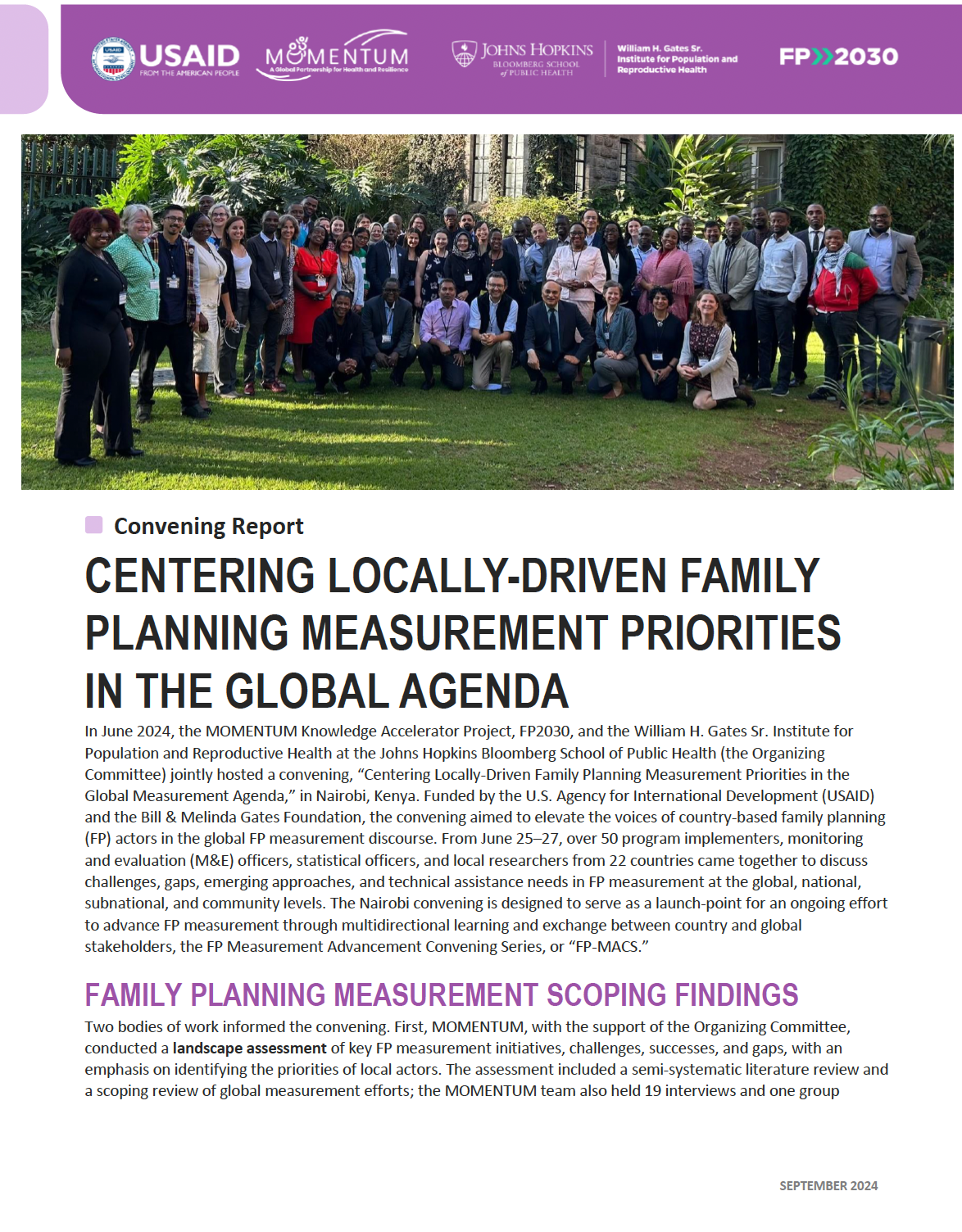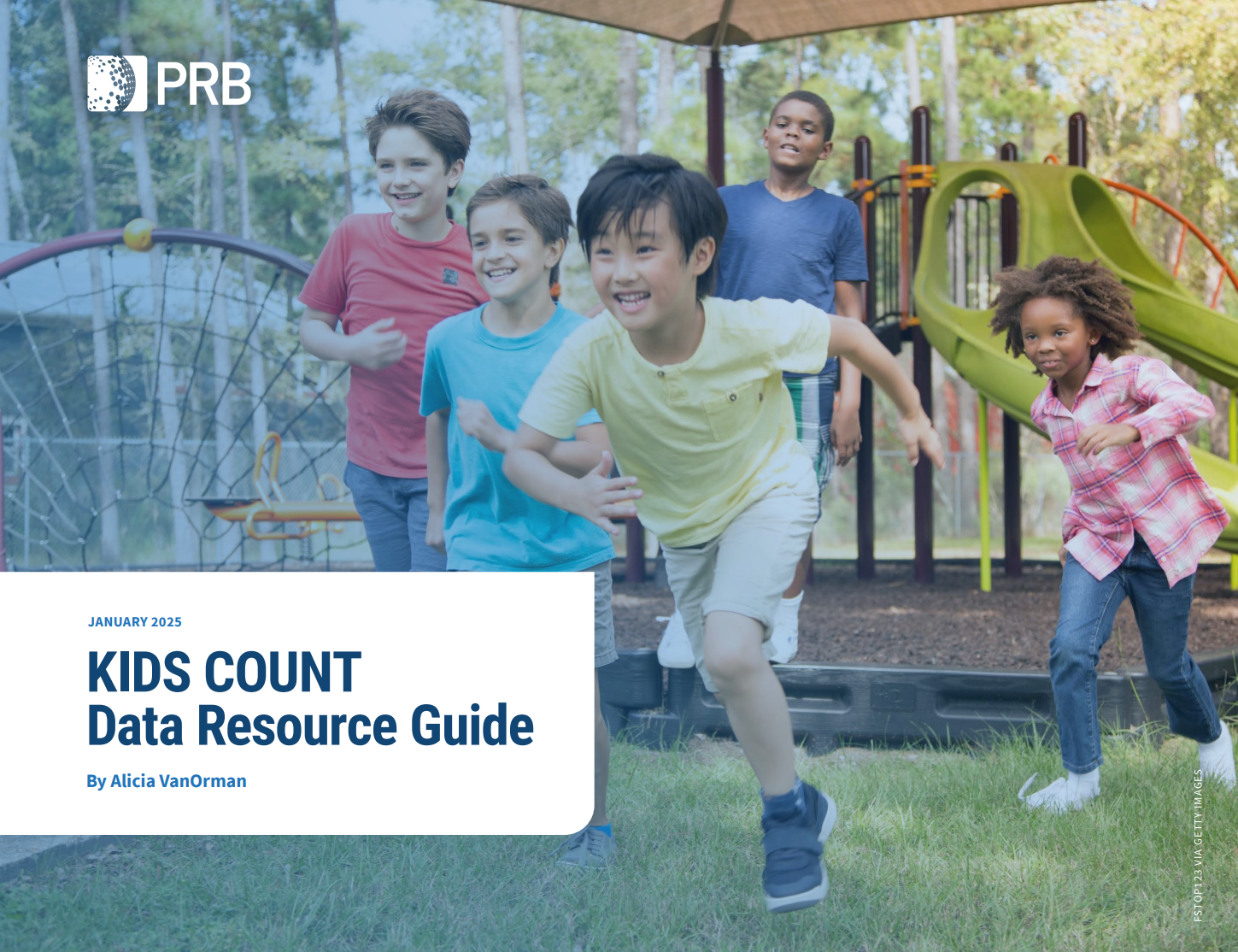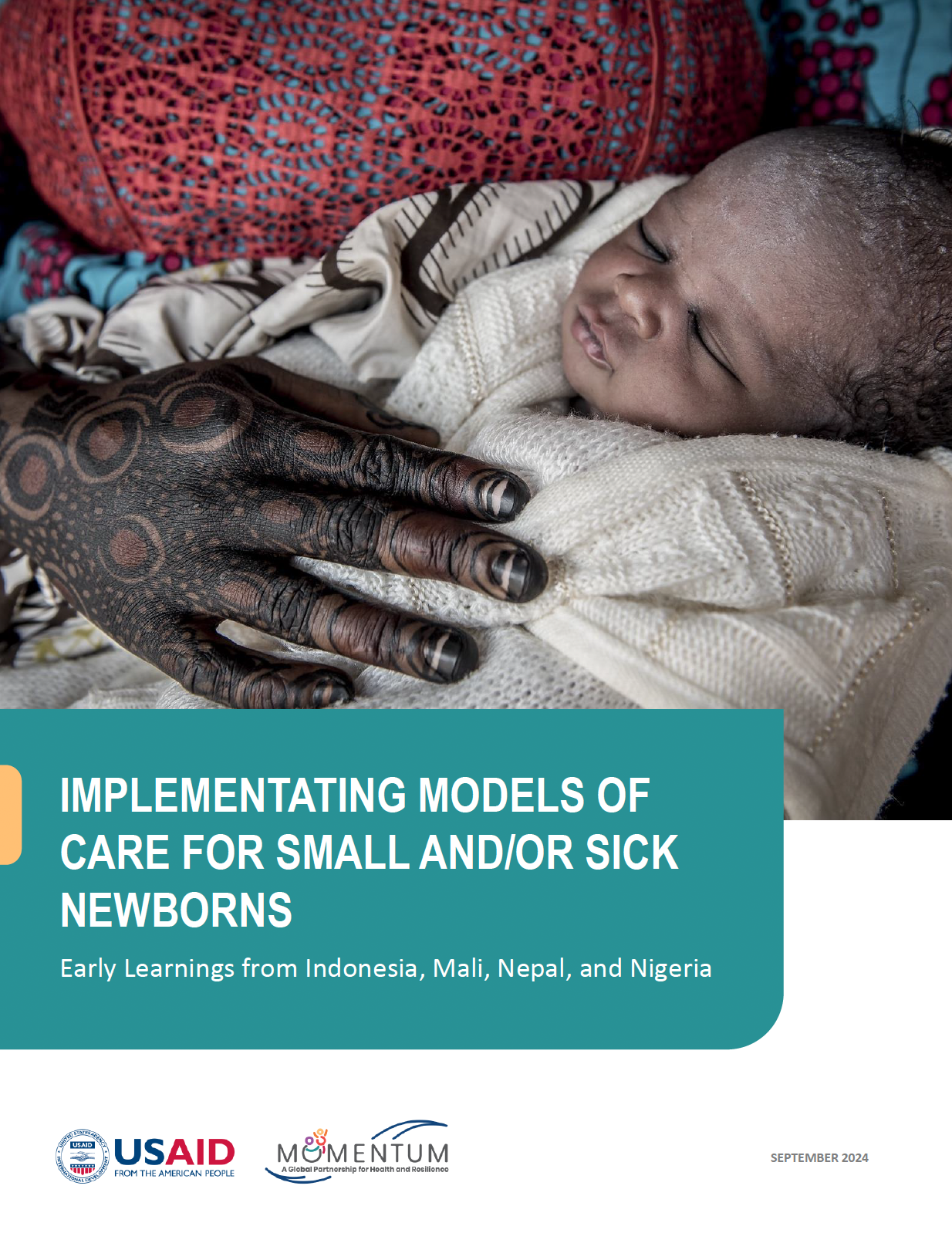
Collaborating for Action on the Future of Demographic and Health Surveys
This convening held on May 7-8, 2025, brought together key stakeholders—including leaders from National Statistical Offices, donor organizations, partner organizations, and data user groups—to identify opportunities and priorities for collaboration to protect current data and preserve ongoing data collection activities.
Date
June 25, 2025
Meeting Report
Since 1984, USAID has funded the Demographic and Health Surveys (DHS) Program to provide technical assistance to more than 400 surveys in over 90 countries. On February 24, 2025, the U.S. government terminated the DHS Program. In the aftermath of the termination, numerous efforts have emerged to mobilize action to sustain collection of high-quality demographic and health data through surveys. These efforts span a range of critical challenges, including preservation and accessibility of current data, completion of near-final surveys, and identifying long-term strategies to support future data collection. As multiple streams of effort have emerged, PRB organized a virtual global convening to support coordination and collaboration.
The convening brought together key stakeholders—including leaders from National Statistical Offices, donor organizations, partner organizations, and data user groups—to identify opportunities and priorities for collaboration to protect current data and preserve ongoing data collection activities. This event created a space to identify needs, gaps, opportunities, and emerging solutions; share efforts that are underway; and support ongoing coordination among stakeholders moving forward.
This meeting report summarizes the discussion and ideas shared in the convening. Each topic, objective, and related stakeholder discussion is presented, with little interpretation, to form a record of the conversation and ideas that arose. This report concludes with a summary of emerging next steps.
For questions about the report or to learn more about ways to engage ongoing dialogue on the future of the DHS, contact Kaitlyn Patierno (kpatierno@prb.org).

Date
March 18, 2025
English Publication
In June 2024, the MOMENTUM Knowledge Accelerator Project, FP2030, and the William H. Gates Sr. Institute for Population and Reproductive Health at the Johns Hopkins Bloomberg School of Public Health (the Organizing Committee) jointly hosted a convening, “Centering Locally-Driven Family Planning Measurement Priorities in the Global Measurement Agenda,” in Nairobi, Kenya. Funded by the U.S. Agency for International Development (USAID) and the Bill & Melinda Gates Foundation, the convening aimed to elevate the voices of country-based family planning (FP) actors in the global FP measurement discourse. From June 25–27, over 50 program implementers, monitoring and evaluation (M&E) officers, statistical officers, and local researchers from 22 countries came together to discuss challenges, gaps, emerging approaches, and technical assistance needs in FP measurement at the global, national, subnational, and community levels. The Nairobi convening is designed to serve as a launch-point for an ongoing effort to advance FP measurement through multidirectional learning and exchange between country and global stakeholders, the FP Measurement Advancement Convening Series, or “FP-MACS.”

Webinar: The Pros and Cons of Virtual vs. In-Person Interaction for Older Adults
Date
March 18, 2025
In this March 4, 2025 webinar, three researchers discussed how social media and new technologies may enhance—or limit—social connectedness and emotional well-being among older adults.
- Karen L. Fingerman (University of Texas at Austin) focused on the relationships between social media use, social ties, and emotional well-being in later life.
- Ellen L. Compernolle (NORC at the University of Chicago) summarized research on loneliness among older adults from Chicago during and before the COVID-19 Pandemic.
- Steven W. Cole (University of California at Los Angeles) described how in-person and virtual social environments influenced gene expression during the COVID-19 Pandemic.
This webinar was hosted by PRB and the Coordinating Center for the Centers on the Demography and Economics of Aging and Alzheimer’s Disease and Related Dementias, with funding from the National Institute on Aging.

Date
January 15, 2025
English Publication
PRB created The KIDS COUNT Data Resource Guide to facilitate the use of population data from the U.S. federal statistical system. Originally designed for the KIDS COUNT program on child well-being, the guide offers practical advice on how to use major data sources—from the Decennial U.S. Census to the National Vital Statistics System—that could be helpful to anyone who works with U.S. population data.
The guide includes an overview of each major data source, including what data are available, how to access that data, and some best practices for using each source. These sources provide up-to-date and reliable information that is comparable across all 50 states, the District of Columbia, and, where available, Puerto Rico and the U.S. Virgin Islands.
Data sources covered by the guide include:
- Decennial Census
- U.S. Census Bureau Population Estimates Program
- American Community Survey
- Current Population Survey
- National Vital Statistics System
- National Survey of Children’s Health
- Small Area Income and Poverty Estimates
- Small Area Health Insurance Estimates
- National Center for Education Statistics
- And more
The KIDS COUNT Data Resource Guide also includes a brief overview of best practices that apply across data sources, such as assessing reliability, making comparisons, and disaggregating by race and ethnicity.

Date
September 1, 2024
English Publication
This analysis presents a compilation of early learnings from experiences with MOMENTUM support in Indonesia, Mali, Nepal, and Nigeria, each of which has engaged with national and subnational partners in planning for and/or implementing improved SSNC. In some cases, country governments and their maternal and newborn health partners have worked to adapt, test, and adjust the global WHO-UNICEF Comprehensive Model for Scaling up Care for SSNBs in district hospitals based on their local contexts; in others, the work to develop a country-specific model of care began prior to the release of the global guidance. The purpose of this report is to present common approaches used in the early stages of implementation of the 10 core components in this diverse set of MOMENTUM countries, along with emerging challenges and learnings.




